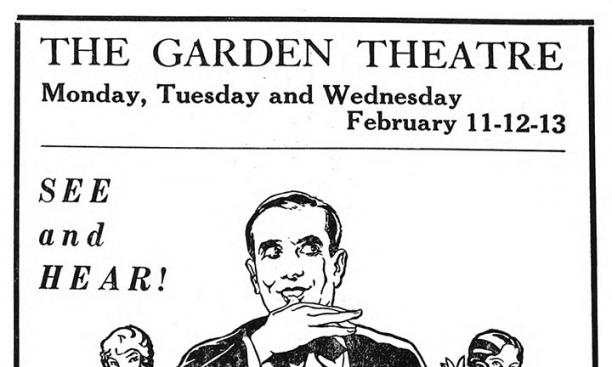
Before YouTube, before VHS cassettes, before television, there were sound films, popularly known as talkies. Although The Jazz Singer, the first feature-length motion picture to include synchronized speech, premiered in the fall of 1927, it was not until the winter of 1929 that Princeton’s Garden Theatre bid farewell to the age of silent films.
This involved the adoption of a new sound-on-disc technology — a marriage of the turntable and projector — called Vitaphone, whose arrival was anticipated with more than a few misgivings. In the words of PAW: “Some there are who aver that the movies at Princeton are loud enough already, others who assert that the sound reproducing contrivance is a vicious invention heralding the collapse of the spoken drama as practiced on the Theatre Intime stage, still others who fear that, when some goddess such as Greta Garbo opens her mouth, all their dreams will be shattered.”
Warning that “history demonstrates that a synthesis of two arts is liable to early extinction,” the editors of The Daily Princetonian questioned whether “the manager of the Garden has contemplated with due seriousness the step which he is taking. Is he giving aid and comfort to a species of art destined by its very nature to failure?”
Undeterred, the Garden Theatre announced its first talkie in the Prince Feb. 11, urging readers to “See and Hear” The Singing Fool, a “Warner Bros. Vitaphone Picture” released in 1928. Like The Jazz Singer, it starred Al Jolson, the most celebrated entertainer of his day, and it proved to be an even greater hit, movingThe Film Daily to declare, “Here is complete vindication for the advocates of sound pictures.” In paraphrasing Jolson’s signature line in its advertisement, “Folks — You Ain’t Seen Nothing Yet,” the Garden Theatre was prescient: Talkies were here to stay.
John S. Weeren is founding director of Princeton Writes and a former assistant University archivist.
